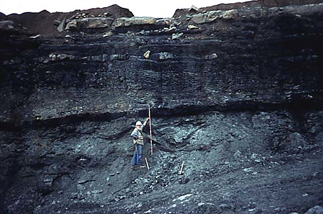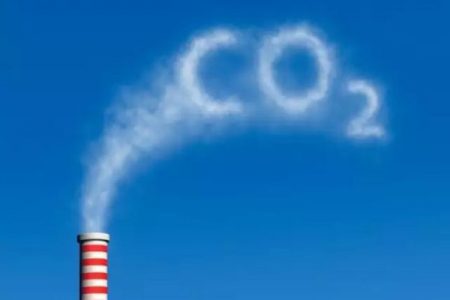March 19, 2018 – This is the first in a series of postings that will look at the global challenge of climate change and how Canada and individual Canadians can help find solutions to regulate the carbon balance on our planet. I will begin in this first article to describe what challenge life on this planet faces in the coming centuries if we don’t re-establish carbon homeostasis, the balance that keeps us in Goldilocks conditions (not too hot, not too cold, just right) on most of Earth’s land masses.
In future postings, we’ll cover what forms of action are needed, where they are needed, and how they can be achieved to restore carbon balance. We will look at the tools, the policies and missing elements still required to ensure carbon remains in balance so life on this planet remains viable.
A reminder of just how out of whack things could become sits some 32 million kilometers away from our planet. It is our closest Solar System neighbour, Venus. Scientists believe at one time Venus, Earth’s near-twin in size and location, had oceans and an atmosphere capable of supporting the emergence of life. But a runaway greenhouse effect turned Venus into a hellish environment. Now Venusian conditions are not likely to happen here. But recognizing what a carbon imbalance can ultimately do to a planet cannot be underestimated.
The Carbon Problem Explained
All life on this planet is carbon-based. In fact, by weight, we are 20% carbon. There is carbon in the Earth’s crust. It’s not much, a mere 0.032% by weight for the lithosphere and outer mantle. That carbon likely came from the surface and got trapped in the rocks that make up the Earth’s crust. Calcium carbonate, commonly known as limestone, is probably the most noted example of lithospheric carbon. But other carbon trapped in the lithosphere is the kind of carbon we have learned to burn: coal, oil, and natural gas.
There is a finite amount of carbon here on Earth. Very little has been added since the initial formation of the planet some 4.5 billion years ago. The exceptions are the occasional carbonaceous meteorite that crashes to the surface or the ocean and adds incremental amounts of new carbon. This is the exception. The general rule is our planet isn’t producing more carbon. What we are doing is redistributing the carbon we have.
So where does carbon reside on Earth?
It is found in living things, the atmosphere, in water, and in the ground. Carbon homeostasis refers to the equilibrium established among these four different carbon environments.
In the period between the Devonian and Permian lies 60 million years in Earth history where environmental conditions on the surface led to a proliferation of plant life. We call this period of time between 360 and 299 million years ago the Carboniferous because of the carbon-rich deposits laid down when these plants died. No previous geologic period was as plant-rich. And from the detritus of the annual cycles of growth of these many plants, we have the fossil fuel deposits that humans discovered 300 million years later and recognized the energy potential held within them.

Now carbon underground locked up in coal, oil, or natural gas, has little to no impact on the atmosphere. But if that carbon is harvested there is disruption to the carbon balance. The deficit in one carbon domain leads to an increase in another. Burn fossil fuels from the underground domain underground and deplete the element there, transfers the carbon to the air, or to materials humans produce that lock in carbon (concrete for example).
When we were only burning a little carbon the Earth had natural means to compensate for the additional amounts. Natural carbon sinks such as forests, grasslands, soil, and water absorbed the excess atmospheric carbon keeping the build-up of the element to levels that had little impact on climate conditions. But then the pace of burning carbon increased from the late 19th century to today where we are consuming billions of barrels of oil, trillions of cubic meters of natural gas, and hundreds of millions of tons of coal annually. The natural sinks that helped to rebalance the carbon can no longer do the job.
This is the problem in a nutshell, redistributed quantities of carbon formerly sequestered underground, now in our atmosphere. We have been the beneficiaries of carbon’s largess. Burning it has helped us create industry. Burning it has produced the fertilizers to increase crop production and feed the growing population of Earth. Burning it has produced wealth and improved the quality of life for much of humanity. But burning it, however, has led to unintended consequences, namely global warming.
Global warming isn’t a fiction despite climate change skeptics’ claims. The evidence of its existence is overwhelming. Both day and nighttime temperatures are rising. The warming atmosphere is more volatile. Storms are more intense. Polar sea ice, continental ice sheets, and alpine glaciers are melting. Variability in atmospheric conditions is becoming more extreme. Places that experienced periods of drought in the past are seeing the duration of dry periods increase. Rain is becoming more unpredictable, and often more intense.
The animals and plants here on Earth in the past have found ways to deal with natural cycles over thousands of years. Evolution has been their adjusting mechanism. But evolution doesn’t work when catastrophic events occur as seen in evidence of mass extinctions in Earth’s past. These mass extinctions, scientists theorize, happened because of sudden changes to the surface and atmospheric equilibrium of the planet, from meteor strikes, or significant volcanic eruptions.
Now it is human activity creating a slower version of a similar catastrophe, not one that is instantaneous but rather slow moving as each decade sees the atmosphere warm a little bit more in correlation with the rising carbon imbalance. The analogy often depicted is that of a frog sitting in a pot of water being warmed on a stove top. At some point, that frog either jumps out or dies. Here on Earth, however, there is no place for the frog to jump to. And we, the humans, animals, and plants, are the frog in the pot. This is our problem. We have created it and we need to find solutions that do not impoverish us or further compromise the lives of the remaining animals and plants of the planet.









